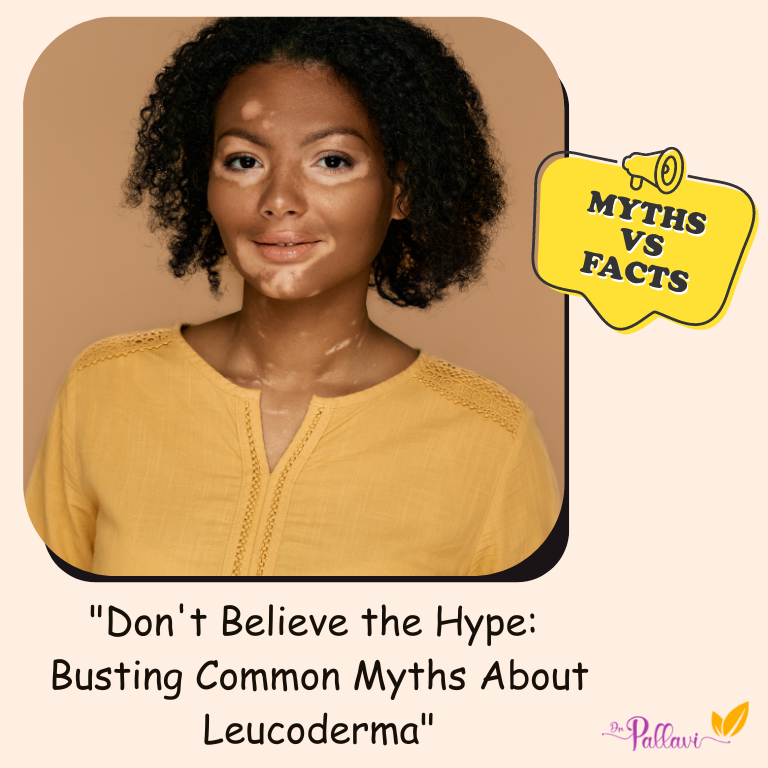
“Don’t Believe the Hype: Busting 10 Common Myths About Leucoderma”
Leucoderma, also known as vitiligo, is a chronic skin condition that causes the loss of pigmentation in certain areas of the skin.
It’s caused by an autoimmune response where the body’s immune system mistakenly attacks and destroys melanocytes, the cells that produce skin pigmentation. Studies have shown that individuals with leucoderma have immune system dysregulation, with altered levels of immune cells and proteins in their skin and blood.
Furthermore, genetic studies have linked the condition to immune system function genes. Although the trigger for this autoimmune response is not fully understood, evidence suggests a combination of genetic and environmental factors may play a role.
If you have a family history of leucoderma or have been exposed to certain environmental factors, you may be at increased risk.
Additionally, leucoderma may be associated with other autoimmune disorders, such as thyroid disease or type 1 diabetes. However, while the exact cause of leucoderma is not yet fully understood, it’s clear that the loss of melanocytes leads to skin depigmentation.
Leucoderma can be distressing for individuals affected by the condition, leading to social stigma, anxiety, and depression. Treatment for leucoderma focuses on managing symptoms and restoring pigmentation to the affected areas of the skin.
Numerous studies have investigated the link between leucoderma and the immune system, with evidence strongly supporting the idea that it is an autoimmune disorder.
Here are some interesting statistics related to leucoderma:
- Leucoderma affects between 0.5% to 2% of the world’s population, equating to millions worldwide.
- In the United States, around 1% of the population is estimated to have leucoderma, which is more prevalent in people with darker skin tones.
- Leucoderma can occur at any age, but it typically develops before age 20, and there is a higher incidence of the condition in people aged between 10 and 30.
- Approximately 30% of people with leucoderma have a family history of the condition, indicating a genetic predisposition to the disorder.
- Leucoderma can impact people of any race or ethnicity, but it is more noticeable in people with darker skin tones.
- Women and men are equally likely to develop leucoderma.
- Around 50% of people with leucoderma develop the condition before age 20, while 75% develop the disease before age 30.
Leucoderma affects millions of people worldwide; despite its prevalence, the condition is still widely misunderstood, with many myths and misconceptions surrounding it.
As a holistic skin specialist, I have seen firsthand how these myths can significantly impact individuals physically and emotionally.
Living with leucoderma can lead to low self-esteem, anxiety, and depression, as the visible nature of the condition can cause social stigmatization and discrimination.
To promote accurate information and support individuals living with the disease, it’s essential to debunk these myths and provide valuable insights into leucoderma.
In this post, we will explore ten of the most common myths about leucoderma and separate fact from fiction.
By doing so, we aim to promote a better understanding of the condition, empowering individuals to take control of their skin health and overall well-being.
It’s time to dispel these myths and promote accurate information about leucoderma.
Myth #1: Leucoderma is contagious.
Fact: Leucoderma is not contagious and cannot be spread through contact. It is not an infection or a contagious disease, and it is not caused by bacteria or viruses.
Myth #2: Leucoderma is caused by poor hygiene.
Fact: Leucoderma is an autoimmune disorder, which means that the immune system mistakenly attacks healthy cells in the body, including the skin cells that produce pigment. It is not caused by poor hygiene or lifestyle choices.
Myth #3: Leucoderma is caused by a nutritional deficiency.
Fact: While some studies suggest that certain nutrient deficiencies may be linked to leucoderma, it is unclear whether nutritional deficiencies cause the condition.
Nutrients that may help manage leucoderma include vitamins B12, C, D, and copper.
Myth #4: Leucoderma only affects people with dark skin.
Fact: Leucoderma can affect people of all skin colors and ethnicities, although it may be more noticeable in darker-skinned people. It is a condition that can affect anyone, regardless of their race or ethnicity.
Myth #5: Sunscreen can cure leucoderma.
Fact: Sunscreen can protect the skin from damage and prevent further loss of pigment, but it cannot cure leucoderma. While some sunlight can benefit individuals with leucoderma by providing the body with vitamin D, excessive exposure to the sun can exacerbate the condition. UV rays can cause further damage to the melanocytes, leading to more depigmentation and increasing the risk of sunburn and skin cancer. Therefore, it is important to strike a balance and take precautions when exposing your skin to sunlight. Wearing protective clothing, using sunscreen, and limiting sun exposure during peak hours can help manage the symptoms of leucoderma while still benefiting from the important nutrients provided by sunlight.
Myth #6: Leucoderma is caused by stress.
Fact: While stress can exacerbate leucoderma symptoms, it does not directly cause the condition. The immune system attacks healthy cells in the body, including skin cells that produce pigment, leading to the loss of pigment and the appearance of white patches on the skin.
Myth #7: Leucoderma always spreads rapidly.
Fact: The spread of leucoderma can be unpredictable and varies from person to person. Some people experience rapid spread, while others may have the condition for many years without significant changes.
Myth #8: Leucoderma is incurable.
Fact: While there is no guaranteed cure for leucoderma (also known as vitiligo), holistic treatments like homeopathy can heal this health issue from the inside out. It is essential to consult with a qualified holistic skin professional for personalized advice on the best treatment options for you.
Myth #9: Leucoderma only affects the skin.
Fact: Leucoderma can affect the hair and eyes as well, leading to loss of pigment in the hair or discoloration of the iris. It is essential to monitor these areas for changes and seek medical advice if any concerns arise.
Myth #10: Leucoderma is a sign of aging.
Fact: Leucoderma can affect people of any age, including children and young adults. It is not a sign of aging or disease affecting only older individuals.
By debunking these myths, we can help promote accurate information about leucoderma and support individuals living with the condition.
If you or someone you know is affected by leucoderma, seek holistic skin healing advice and support to manage the condition effectively and continue living life to the fullest.
Did you find today’s blog post on holistic skin health helpful and informative?
Make sure you take advantage of future updates!
Remember to like and subscribe to our website for the latest news, tips, and insights on achieving healthy, glowing skin from the inside out.
Struggling with a chronic skin issue that just won’t go away?
It’s time to take action and schedule a Consultation with Dr. Pallavi.
Every chronic issue requires a holistic approach to truly heal from the inside out.
Dr. Pallavi has helped thousands of people do just that.
You, too, can achieve healthy, radiant skin by tapping into her expertise and personalized treatment plans. Don’t wait any longer – take the first step towards a healthier you today!
References:
- Ongenae, K., Van Geel, N., & Naeyaert, J. M. (2003). Evidence for an autoimmune pathogenesis of vitiligo. Pigment Cell Research, 16(2), 90-100.
- Kemp, E. H., Waterman, E. A., & Gawkrodger, D. J. (2001). The relationship between stress and the onset and exacerbation of psoriasis and other skin conditions. British Journal of Dermatology, 144(5), 978-983.
- Jin, Y., Birlea, S. A., Fain, P. R., Ferrara, T. M., Ben, S., Riccardi, S. L., … & Gowan, K. (2012). Genome-wide association analyses identify 13 new susceptibility loci for generalized vitiligo. Nature Genetics, 44(6), 676-680.
